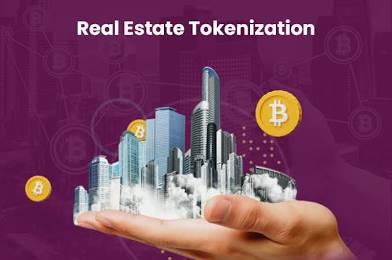IT IS YOUR MONEY
Tokenization Reduces Real Estate Entry Barriers
Tokenization is dramatically lowering entry barriers in real estate by enabling fractional ownership, reducing minimum investments from millions to hundreds of dollars. Blockchain-based platforms allow global investors to buy shares in high-value properties with transparency and liquidity. From Manhattan condos to Dubai villas, tokenized real estate is democratizing access to one of the world’s most valuable asset classes.

Breaking Down the Barriers to Real Estate Investment
Historically, real estate investment required significant capital, legal expertise, and local market knowledge. A single property could cost millions, limiting participation to wealthy individuals or institutional funds. Secondary markets were illiquid, and cross-border purchases were complex and slow.
Tokenization disrupts this model by dividing property ownership into digital tokens—each representing a fraction of equity. Investors can buy as little as 0.1% of a $10 million asset, gaining proportional rights to rental income and appreciation.
This shift opens real estate to retail investors, millennials, and global participants who previously lacked access.
How Tokenization Works in Practice
A property is acquired or designated for tokenization and placed into a legal entity (e.g., an LLC or SPV). It is appraised, and ownership shares are issued as security tokens on a blockchain—often using standards like ERC-3643 for compliance.
These tokens are sold on regulated platforms such as RealT, Lofty AI, or Centrifuge. Investors use fiat or stablecoins to purchase tokens, and smart contracts automate monthly rental distributions, typically in USDC.
For example, Lofty AI tokenized a $350,000 home in Atlanta into 35,000 tokens at $10 each. Over 1,200 investors from 30+ countries participated, earning monthly yields from tenant rent.
Global Examples and Market Growth
In Dubai, the government-backed D3 free zone has facilitated over $200 million in tokenized real estate transactions. A luxury beachfront villa was fractionalized into 10,000 tokens, selling out in 72 hours.
In New York, a mixed-use building in Brooklyn was tokenized via a regulated security offering, attracting accredited and international investors. Secondary trading is now available on a licensed ATS (Alternative Trading System).
In Germany, platforms like TradeFunds enable tokenized investments in commercial real estate, with minimums as low as €100.
Benefits: Liquidity, Transparency, and Diversification
Tokenization introduces liquidity to an otherwise illiquid market. Investors can trade tokens on secondary markets, enabling exits without waiting for a full property sale.
Ownership history, rent collection, and maintenance costs are recorded on-chain, enhancing transparency. Investors can track performance in real time via dashboards.
Additionally, investors can diversify across geographies and property types—residential, commercial, industrial—without large capital outlays.
The Future of Accessible Real Estate
As regulatory frameworks mature and institutional capital flows in, tokenized real estate is poised for exponential growth. Analysts project the market to exceed $5 trillion by 2030.
It’s not replacing traditional ownership—it’s expanding it, making real estate a truly global, inclusive, and dynamic asset class.
To explore how tokenized real estate can diversify your portfolio with low entry costs and steady yields, visit DigitalAssets.Foundation and speak with experts. FREE consultation.

More News
© 2025
